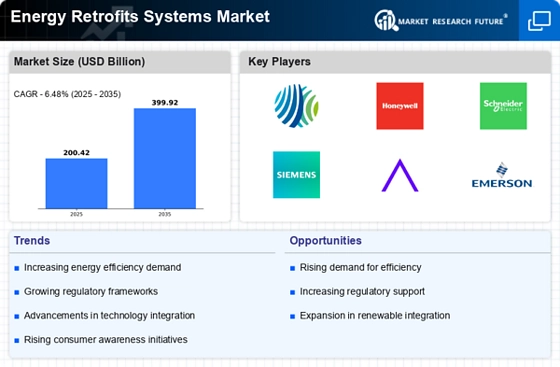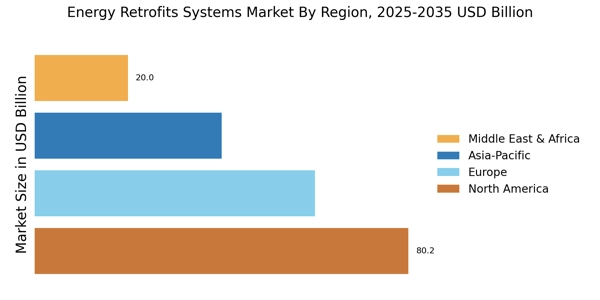Rising Energy Costs
The escalating costs of energy are a primary driver for the Energy Retrofits Systems Market. As energy prices continue to rise, consumers and businesses alike are increasingly motivated to seek solutions that enhance energy efficiency. This trend is evident in the growing demand for retrofitting existing buildings with advanced energy systems. According to recent data, energy costs have surged by approximately 20% over the past five years, prompting stakeholders to invest in energy retrofits as a means to mitigate expenses. The Energy Retrofits Systems Market is thus positioned to benefit from this economic pressure, as more entities recognize the long-term savings associated with energy-efficient upgrades.
Growing Environmental Awareness
The increasing awareness of environmental issues is significantly influencing the Energy Retrofits Systems Market. As climate change concerns intensify, both consumers and businesses are prioritizing sustainability in their operations. This shift in mindset has led to a heightened demand for energy retrofitting solutions that reduce carbon footprints. Recent surveys indicate that over 70% of consumers are willing to invest in energy-efficient upgrades, reflecting a broader societal commitment to environmental stewardship. Consequently, the Energy Retrofits Systems Market is poised for growth as stakeholders seek to align their practices with sustainable principles.
Government Incentives and Policies
Government incentives and policies play a crucial role in propelling the Energy Retrofits Systems Market. Various jurisdictions have implemented financial incentives, such as tax credits and rebates, to encourage energy-efficient renovations. For instance, recent legislation has allocated substantial funding for energy efficiency programs, which has led to a marked increase in retrofitting projects. This supportive regulatory environment not only stimulates market growth but also fosters innovation within the sector. The Energy Retrofits Systems Market is likely to see continued expansion as these policies evolve, further incentivizing stakeholders to adopt energy-efficient solutions.
Urbanization and Infrastructure Development
Urbanization and infrastructure development are significant factors driving the Energy Retrofits Systems Market. As urban populations continue to grow, there is an increasing need for energy-efficient buildings and systems to accommodate this expansion. Recent data suggests that urban areas are expected to see a 50% increase in population by 2050, necessitating substantial investments in energy retrofitting. This trend presents a unique opportunity for the Energy Retrofits Systems Market to cater to the demands of modern urban environments, where energy efficiency is paramount for sustainable development.
Technological Advancements in Energy Efficiency
Technological advancements are transforming the Energy Retrofits Systems Market by introducing innovative solutions that enhance energy efficiency. The integration of smart technologies, such as IoT devices and advanced building management systems, allows for real-time monitoring and optimization of energy use. This trend is evidenced by a reported increase in the adoption of smart retrofitting technologies, which have been shown to reduce energy consumption by up to 30%. As these technologies become more accessible and affordable, the Energy Retrofits Systems Market is likely to experience accelerated growth, driven by the demand for cutting-edge energy solutions.


















Leave a Comment